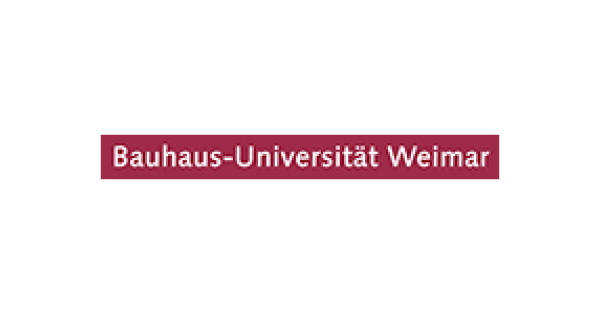Unified monitoring with Paessler PRTG secures IT infrastructure for 5,000 students at Bauhaus University Weimar
About Bauhaus University in Weimar, Germany
The Bauhaus University in Weimar has quite the history. Founded in 1860 as a purely artistic educational institution, over the years it has transformed into a modern technical university with engineering disciplines. Since 1996, the university’s official name incorporates both “art” and “technology.” Its four faculties (architecture and urban studies, civil engineering, design, and media) currently offer 36 courses of study. 20% of the university’s students come from abroad, which is around 8% more than the national average in Germany.
Education at Bauhaus University in Weimar is primarily influenced by the Bauhaus and its founder, Walter Gropius, and centers around architecture and urban studies, civil engineering, design, and media. Today, all these courses of study rely on perfectly functioning IT. Anomalies and disruptions in IT can have a serious impact on everyday studies. Above all, a reliable infrastructure must be in place to prevent such issues. The IT team at Bauhaus University therefore recently replaced its monitoring system with PRTG Network Monitor, a monitoring solution developed by Paessler that provides the team with a comprehensive overview of the entire IT infrastructure, thereby helping to ensure the availability and performance of all its systems.
In total, 5,000 students and 400 employees have access to the IT systems of Bauhaus University in Weimar. The Service Center for Computer Systems and Communication (“SCC”), and in particular the Infrastructure Department headed by Steffen Ille, is responsible for the IT infrastructure at Bauhaus University. The SCC provides and oversees key services such as IP telephony, email, Internet, the Intranet, access control, and data management, as well as administrative support and the provision of the PC pools, printers, and plotters that are vital to the courses of study on offer at the university.

“When looking for a tool to replace Nagios, we based our search on two main criteria: a wide range of features and optimal usability. And of course, value for the money. PRTG immediately met all these criteria, making our decision extremely easy.”
Dipl.-Ing. (BA) Steffen Ille, Head of Infrastructure, Service Center for Computer Systems and Communication at Bauhaus University in Weimar
The switch from an outdated system
“We used to use Nagios for our network monitoring, but the system was outdated and eventually no longer met our requirements,” explains Dipl.-Ing. (BA) Steffen Ille, Head of Infrastructure, Service Center for Computer Systems and Communication at Bauhaus University in Weimar. “Due to its poor documentation, it would have been much too expensive to modernize the old solution.”
With the help of the IT service provider BEL NET GmbH, the SCC tested various open-source tools, as well as commercial monitoring solutions. Steffen Ille describes the main requirements of the SCC: “When looking for a tool to replace Nagios, we based our search on two main criteria: a wide range of features and optimal usability. And of course, value for the money. PRTG immediately met all these criteria, making our decision extremely easy.”
Easy setup and maintenance - top priorities
Above all, the SCC wanted a comprehensive monitoring solution that was easy to set up and maintain. They found one in PRTG. PRTG keeps an eye on the network devices and Cisco UCS servers used by Bauhaus University, as well as its EMC Isilon storage systems. In addition, various UPS systems (APC, Riello) and temperature sensors (Rittal) are included in the hardware monitoring. On the software side, PRTG monitors the VMware vSphere hypervisor, as well as numerous applications and services such as mail servers, web servers, and databases.
The monitoring is performed agentlessly via individual measuring points in PRTG, which are more commonly known as “sensors.” The software uses various protocols such as SNMP, WMI, NetFlow, SSH, and FTP to collect data from the monitored devices and applications.
In contrast to the previous Nagios system, PRTG saves the SCC an enormous amount of time and hassle as agents no longer need to be installed and maintained on the monitored devices. PRTG comes with more than 200 preconfigured sensor types for all the most common devices and applications. If something can’t be monitored “out of the box” by PRTG, so-called custom sensors can be created both quickly and easily via the well-documented API, which even includes examples of scripts. The IT team at Bauhaus University in Weimar made use of this API to create custom SNMP sensors based on their own OIDlibs.
Steffen Ille sums up the factors that helped the IT team quickly implement PRTG: “Unlike Nagios-based tools, PRTG does not require constant changes in config files. PRTG also comes with preconfigured sensors and an intuitive user interface, which made setup both quick and surprisingly easy.”
The solution: unified monitoring
PRTG provides the IT team at Bauhaus University with a centralized overview of its entire IT, including individual infrastructure components. By simply dragging & dropping into “maps” created in PRTG, the service desk staff immediately obtains an overview of the status of the infrastructure. Upon clicking on a sensor in the map, PRTG displays the history of the respective monitoring data in a graph, giving the admin a quick impression with all the information that is needed.
The best part about PRTG? “You sleep better at night,” answers Steffen Ille. “With PRTG, you get a centralized, intuitive, all-in-one tool that monitors the entire infrastructure. In the event of an error, the software immediately informs you by email. If you don’t hear from PRTG, you can sit back and relax, knowing everything is in order. Shortly after implementing PRTG, we were able to identify and eliminate performance bottlenecks in our VMware environment and load problems in our network. PRTG also notified us of a malfunctioning hard drive on a Cisco UCS blade server.”
Long-term plans thanks to a future-proof solution
IT is anything but static, especially when you manage the infrastructure of a university. You have to be prepared for constant innovations and expansions. With PRTG, Steffen Ille’s team can depend upon a future-proof solution. In fact, the team is already getting ready to monitor its Active Directory environment and various server functionalities. PRTG remote probes are an additional feature that offer significant expansion possibilities. Remote probes are Windows-based services that can be used to monitor the infrastructure in different locations. Data collected by these probes is transmitted in encrypted form (SSL) to the main PRTG installation, where it is analyzed. In the case of Bauhaus University, this is especially interesting in light of its planned disaster recovery data center. Steffen Ille and his team are also testing the PRTG app for Android. With this app, the SCC can keep a constant eye on the status of the IT system, even while on the go. Alerts are sent via push notifications, and in the event of an emergency, the respective employee can access PRTG directly via the app.
Even with such large-scale expansions, PRTG offers the necessary flexibility in terms of licenses to meet any monitoring needs. Every PRTG license includes the full range of monitoring features – the only thing that changes is the number of sensors. Bauhaus University opted for a license with 5,000 sensors, and so far this has proven sufficient. Should that change in the future, the university can conveniently upgrade to a license with more sensors.
Conclusion
The Service Center for Computer Systems and Communication (SCC) at Bauhaus University in Weimar now uses PRTG, a unified monitoring system that provides for a comprehensive overview of the entire network infrastructure. PRTG is quick and easy to set up, and provides for reliable alerts in the event of disruptions. The software is also extremely easy to maintain, and thanks to its numerous features, offers a great deal of expansion possibilities. As an internal service provider, the SCC has been able to significantly improve the quality of its service thanks to PRTG. Steffen Ille concludes: “PRTG has made our day-to-day work noticeably easier. We now have an overview of the big picture, and can promptly take action as needed. This has improved the quality of our service, as well as the stability and performance of the entire infrastructure at Bauhaus University.”
Get to know more happy PRTG customers
Customer success story The Social Hub & PRTG
With the implementation of PRTG, The Social Hub can monitor each hotel location in Europe while simultaneously having a central overview in Amsterdam. ➤ Read the complete customer success story now!
Customer success story Canopy Cancer Care & PRTG
At Canopy Cancer Care, PRTG keeps an eye on all manageable devices that support standard network and industrial IT protocols, and IoT devices. ➤ Read the complete customer success story now!
Customer success story Het Concertgebouw & PRTG
The IT team at Het Concertgebouw regularly does power failure tests and immediately sees in PRTG what goes down and no longer comes up. ➤ Read the complete customer success story now!



